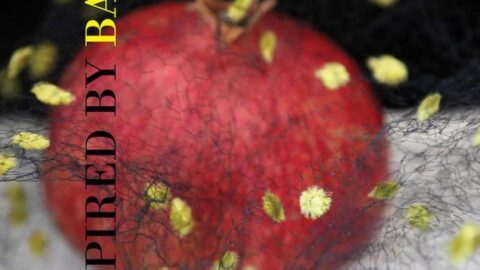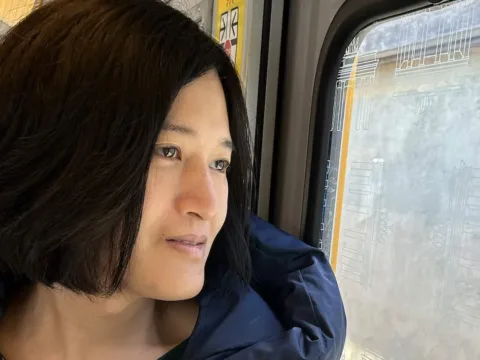Movses Pogossian is an Armenian-born violinist and champion of new music. He has premiered over 70 pieces, has worked closely with György Kurtág, Tigran Mansurian, John Harbison and Augusta Read Thomas, and has collaborated with Music for Food, a non-profit organization that raises awareness about world hunger. His new album, titled Inspired by Bach, has been released on New Focus Recordings and includes works by Kaija Saariaho, Gabriela Lena Frank, and Andrew McIntosh.
Inspired by Bach is Pogossian’s artistic response to his previous album, J.S. Bach: Six Sonatas and Partitas for Solo Violin (New Focus Recordings). There is great value to the fact that Pogossian has decided to follow such a massive recording project with the commissioning of new works that could easily become canon for the contemporary violin repertoire.

Inspired by Bach opens with Kaija Saariaho’s Frises (2011) for violin and electronics, written in four movements. It was originally composed for and dedicated to violinist Richard Schmoucler, and commissioned by the Borusan Art Centre, Istanbul. The first movement opens with a pure tone low D that is gradually transformed by electronics, trills, and over-pressure of the bow. It is a meditative and intimate experience that gives the listener an opportunity to solely focus on the music, helping to clear your thoughts so you can hear the piece with a clean mind. The second movement features a bass line that grounds the melodic material, emulating Bach’s use of bass lines in his solo violin works. The third movement is a groovy conversation between the violin and the electronics that is interrupted by a stunning violin monologue. It’s a dance-like movement that lifts the listener from the comforting ground in which the previous movement was rooted. The fourth movement comes back down to Earth with beautiful electronics that are in lower octaves with the violin.
The album continues with Suite Mestiza (2017) for solo violin by Gabriela Lena Frank, composed for Pogossian and commissioned through New Music USA’s New Music Connect program. This piece is a colorful exploration of Andean culture written in seven movements. Suite Mestiza opens with a beautiful and intimate movement titled “Haillí” (Prayer). Frank’s writing and the intention in Pogossian’s playing make the very beginning of the movement sound like a boldly-spoken prayer being said in isolation in the Andean mountains. The third movement, “Charanguista Viejo” (Old Charango Player) showcases a very dry pizzicato that evokes the pointed and sharp sound of a charango (a small Andean string instrument, from the lute family). The last movement, “Luciérnagas” (Fireflies), is bright and fast, like fireflies giving small glimpses of light in the night.

Inspired by Bach closes with a work by Andrew McIntosh titled Sheer (2017) for solo violin and eight wine glasses. This work was also been composed for Pogossian and commissioned through New Music USA’s New Music Connect program. The seven-movement piece requires the assistance of four performers playing bowed wine glasses. The first movement of Sheer opens with a virtuosic yet brief bariolage passage (alternation of notes on neighboring strings) followed by long tones. The fourth movement is an exploration of microtonal relationships within standard musical intervals. The last movement of the piece is a study of harmonics and the different timbres they can create, while the eight wine glasses accompany the violin in the background.
Movses Pogossian offers a beautiful and honest performance of very different pieces. It is clear that he is a master of his craft, and that every work was treated with immense love and care, but what stands out the most is that Inspired by Bach presents a bold claim for violin repertoire. In a world where violinists continue to attempt to find “revolutionary ways” to perform Bach, the creation and recording of new works that integrate new techniques, electronics and even wine glasses, is a breath of fresh air. Inspired by Bach gives ample space for violinists to embrace the new, without forgetting the old, and sets an ideal example of what the process and result of commissioning new works should be like.
























